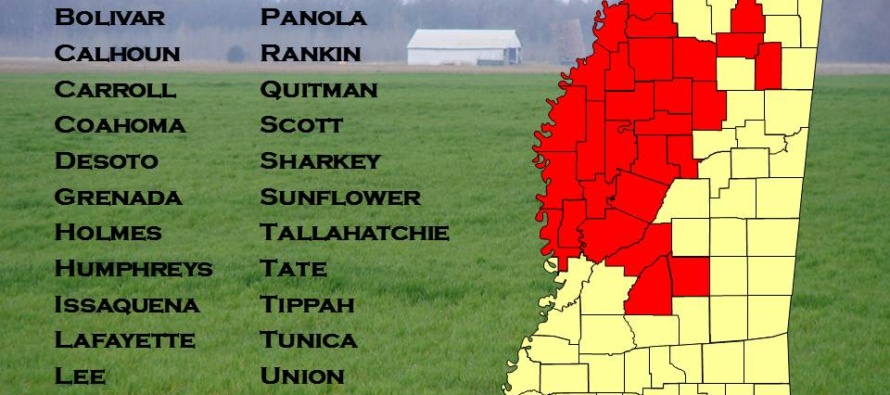Glyphosate-resistant Italian Ryegrass Spreading across Mississippi

The severity of the glyphosate-resistant (GR) Italian ryegrass problem in Mississippi has varied from year to year. This year has been the worst year since the initial confirmation in 2005, and GR Italian ryegrass is spreading. In the spring of 2011, there were 13 counties in Mississippi with confirmed GR Italian ryegrass. We have identified an additional 15 counties in 2012 with several of these counties located in the hills.
Corn is generally considered to be one of the more competitive crops because it emerges quickly, grows rapidly, and shades the middles in a much shorter time than cotton or soybeans. However, corn is not competitive with the large ryegrass, which is present right now across the Mississippi Delta. When corn is planted into standing Italian ryegrass, the aboveground ryegrass plant parts compete with corn seedlings for light and space, and ryegrass roots limit the water and nutrients available to corn seedlings.
Similar to corn, rice is also sensitive to early-season competition from Italian ryegrass. In 2011, we conducted a study at Stoneville comparing rice growth in plots with and without Italian ryegrass. Where rice was planted into Italian ryegrass residue, rice seedling density was reduced 25%, height was reduced 33%, and rice maturity was delayed from 7 to 12 days compared with plots that did not contain Italian ryegrass residue. By the end of the season, rice yields were 15% lower in plots that contained ryegrass residue early in the season.
Some ALS-inhibiting herbicides (Group 2 herbicides) such as Steadfast or Stout labeled for corn and Beyond labeled in Clearfield rice provide fair postemergence control of Italian ryegrass. Unfortunately, Italian ryegrass is resistant to ALS herbicides across much of the Mississippi Delta, rendering this chemistry ineffective for ryegrass control. Therefore, it is imperative to control all Italian ryegrass before the crop emerges.
After Italian ryegrass reaches 12 inches, paraquat is the most consistent control option prior to crop emergence. Large ryegrass (12 to 24 inches) will require two applications of paraquat (4 pints of Gramoxone SL or 2.67 pints of 3-lb paraquat) spaced 7 to 10 days apart. Atrazine (1 quart) may be added to paraquat applications in fields planted to corn.





Let me tell You a sad story ! There are no comments yet, but You can be first one to comment this article.
Write a comment